Trailer
I sat down with Francis Galluppi, the director of The Last Stop in Yuma County, and I ended up finding myself engrossed in his storytelling and amazed by his dedication to the craft (as evidenced by his lengthy “Bible of Thoughts”). While Galluppi may be a first-time feature director in literal terms, his preparation and understanding is that of a seasoned veteran. In fact, over the course of our 45-minute chat, things became increasingly clear to me. Galluppi is here to stay, and he is someone a hell of a lot more people will be talking about in a few years from now.
Francis Galluppi
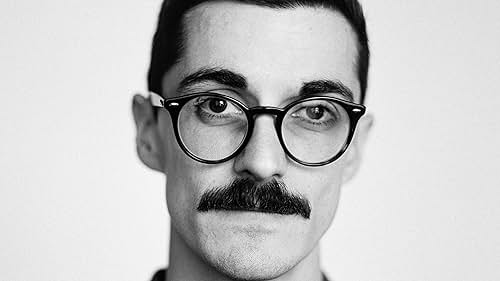
A Conversation with Francis Galluppi: Director of THE LAST STOP IN YUMA COUNTY
On How the Film Got Made
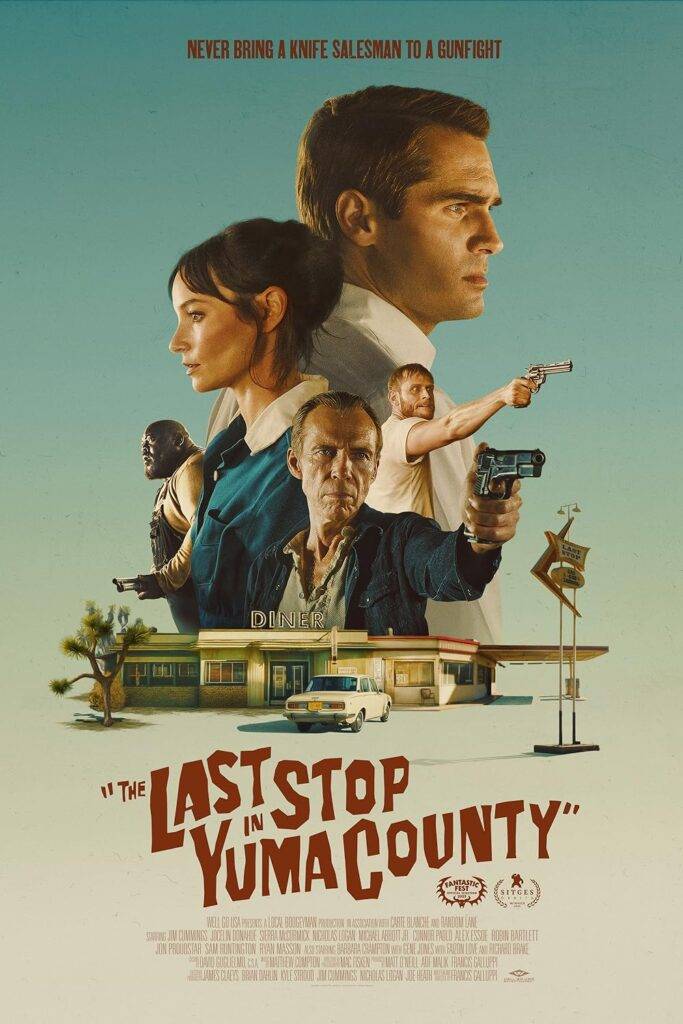
Adam Manery
Congratulations on The Last Stop in Yuma County. It looks amazing – right from the opening shot. It wasn’t exactly a smooth ride getting here, though. You initially optioned the script, but that didn’t work out. Your friend ultimately sold his house to help with financing. Can you walk us through how you got to this point?
Francis Galluppi
I can start from the beginning and give you the cliff notes, but my background is actually music. I grew up playing in punk bands with my older brothers and stuff. I went to college for music, and that was my whole life—playing music, drums, and punk bands. I think I have always been a little bit more interested in film. I was always sort of obsessed with getting through a certain particular filmmaker’s entire filmography, right?
I love doing that. When I was 28 or so, I broke my wrist and couldn’t play drums for like six months. To pass the time, I picked up my T2I and made a short film around the house with my wife, and I really didn’t know what the fuck I was doing… I didn’t know anybody in the industry or anything like that, but I realized how fun it was. I loved it. We literally had no crew, and it took months to make because whenever we had downtime, I would pick up the camera and shoot her, and we were just figuring out the story as we were shooting.
From there, I just started writing scripts based on locations we had free access to. My buddy had a desert house, and I kind of wrangled my group of friends and bandmates and went out there and just made stuff for not a lot of money. I learned everything on YouTube – learned how to edit, do sound design, score. Everything.
I started writing letters to these actors I always wanted to work with and got really, really lucky. Everyone said yes. And we started making the movie
So we were able to do it really, really cheap. And then my first real short film went to this festival in Cincinnati. This guy, James Claeys, owns a clothing company called Local Boogie Man, and he was like, “Hey, I’ll give you ‘X’ amount of dollars“. It was like 30 or 50 grand – to do whatever I was going to do next.
To me, that was insane. I can make three features for that, right? I was doing the math. We spent a couple thousand dollars on this short 22-minute film. So, I tried to apply that cost to a feature-length project. I had never written a feature screenplay before, so I was going to write something super contained and just do what I’m used to doing: writing something based on a location.
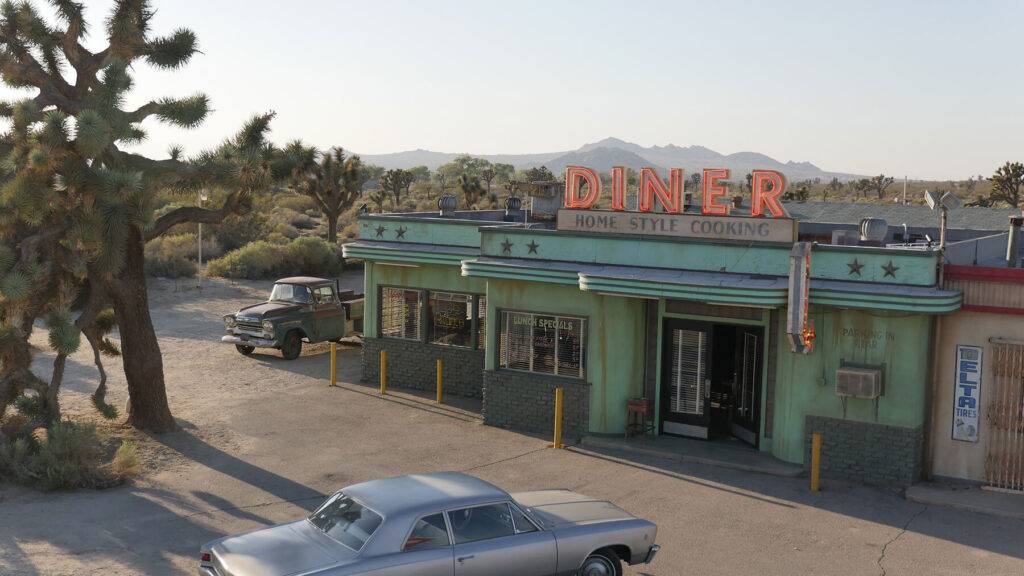
So I found this location, Four Aces, out in Palmdale, took a bunch of pictures, designed the overheads in Photoshop, and then started writing the script based on that location specifically. You know, convince them to give me a student discount, and I just started producing myself.
Then we sent the script to Richard Brake, who is the sweetest guy ever. He gave no fucks that it was a micro-budget thing. He just wanted to do it. That gave us some leverage, and I ended up optioning the script to a company that promised to do it for around $5 million. From then on, it was a real shit show.
We needed a big name in there, and none of these names were saying yes to a first-time director. Also, just creatively, it didn’t fit with what I wanted this movie to be. So, as soon as the option expired, I was like, “I’m going to do this myself,” and I started making the movie. My DP and I (Mac Fisken) did a lot of prep at that point.
We had everything shot listed and were going out to the location. We photo-boarded everything, and then I still had a casting director attached through the development money James gave me. So I started writing letters to these actors I always wanted to work with and got really, really lucky. Everyone said yes. And we started making the movie – hiring HODs, figuring, “Okay… I’m going to talk to this guy.”
I got Charlie Textor on board as our production designer, and then I was ready to go. Just tell me when. But yeah, what ended up happening was James sold his house to finance it.
It was a truly independent process. We were so outside of the “Hollywood” system making this movie. That’s a reason why Jim Cummings and I really hit it off. I didn’t know Jim before this, but he was sort of a North Star for me. I loved his films. I thought he was a fantastic actor.
I always had him in mind for The Knife Salesman. And when I sent him that letter, he called me and asked me to come over for coffee. We talked about South Park for three hours, and then we talked about the whole DIY ethos of making movies and learning yourself, learning everything yourself, and not waiting for somebody to give you permission. And now Jim is one of my really close friends. Whenever I feel like I’m in a rut trying to make the next thing, I call Jim.
On Finding the Value in Restrictions
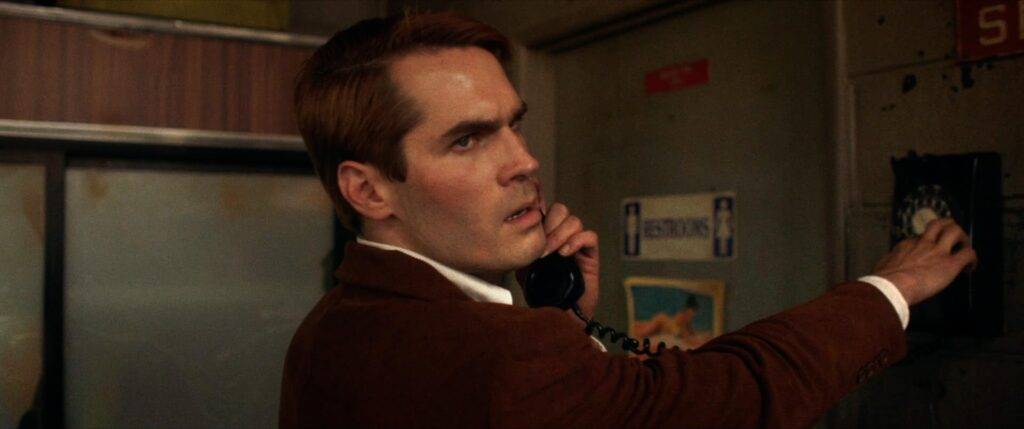
AM
That’s the true indie way to get a film made. Do you think much of the film would have been different if things had gone down the original route?
FG
I think certain elements of this story would have been stripped away had we done it another way, but because we are completely in control of everything, it’s exactly what it was on the page. We got to do that version of it, right? And obviously, it was low budget. We didn’t have a lot of money, but I think that sometimes that works out in your favor.
When it was a $5 million version, I was planning Technocrane shots and this and that. I had all these toys to play with. So, looking back, I’m like, “Oh my God, that would not have fit in the tone of this movie.” I got carried away, but once we knew what the budget was, it became clearer. We had a tripod and maybe a dolly, so I started recrafting the shot list. I realized that this was more the movie. Those limitations are sometimes benefits.
At one point, we were going to build an entire location. We were going to have all these wild walls; I could take off the ceiling and put a crane in there. It was so stupid. Moving forward, any movie I do, no matter what the budget is like, I’m going to try and approach it with the most minimal tools possible. I’m going to pretend we’re still making it for a million bucks.
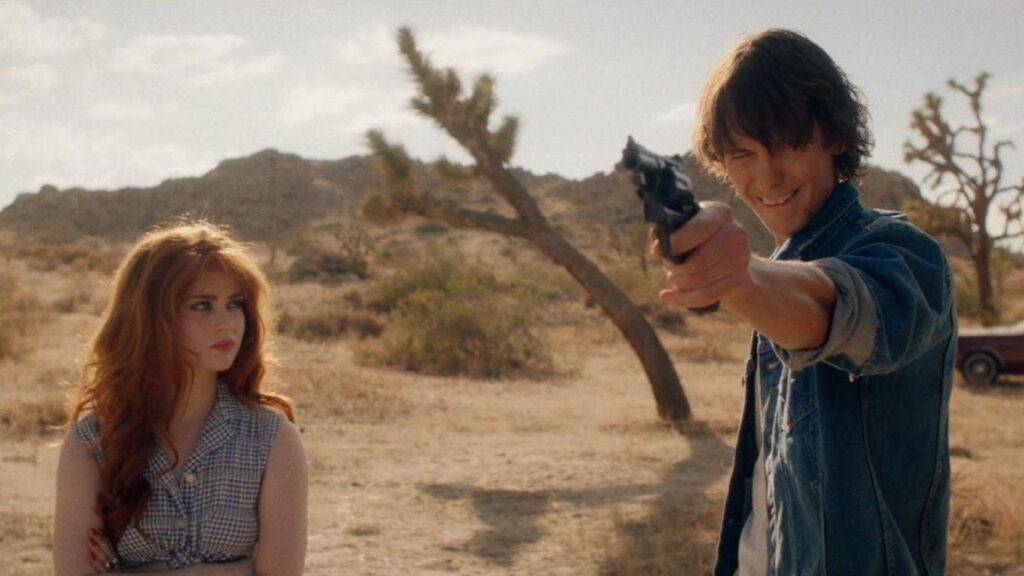
AM
I couldn’t agree more. In this film, you weren’t afraid to just be still and slow. There were locked-off shots, and then when the camera moved, it was slow and subtle. Were you ever nervous about the pacing? You’re in a single location and don’t have all these toys. Were you confident you would still engage the audience?
FG
You know what, it’s weird. Even working with these actors, I was a big fan of them, and I never really felt myself get nervous. I probably did, but when we had that much time to prep, we had such a plan, and we didn’t have a lot of days. You get there in the morning and are so focused. You don’t have time to second guess yourself. We only have enough time to cover the scene in a 2-shot. We don’t have time to do singles and get a bunch of coverage, so I just had to trust myself. Also, for months leading up to it, I was waking up in the morning and playing the movie from beginning to end in my head – making sure that I had everything right.
That’s how I always want to approach a scene. Where’s the camera? What is the camera doing? What is the scene? What am I trying to say? And how do I evoke that with just a camera move?
There were probably moments where I was like, “Oh, this is really slow,” but never to a point where I thought we should get coverage. And even if I did, we didn’t have time to do it. I edited the movie, and I think I had a first cut in three weeks because there was no other way to cut this movie. It was like paint by numbers. Take the things and place them in there; pick the best shot. If any other editor came in, it wouldn’t be much different. It is what it is.
Even without those restraints, though, I am a big fan of just playing scenes out in a 2-shot and a wide. I don’t watch a lot of TV, but like when my wife is on the couch watching these shows, and it’s such a simple scene, but there’s 15 setups. For something so simple, it seems like a waste of time. I would never want to make movies like that. I will probably regret saying this, but I don’t feel like there’s any craft in that when you shoot everything. You have so many options, and you’re not thinking about tone. You’re not thinking about the perfect place to put this camera to evoke a certain emotion for the audience.
That’s how I always want to approach a scene. Where’s the camera? What is the camera doing? What is the scene? What am I trying to say? And how do I evoke that with just a camera move? And if there was no sound, if somebody had this movie on mute, they’re still going to get that same emotion out of it.
On Planning Out Every Shot
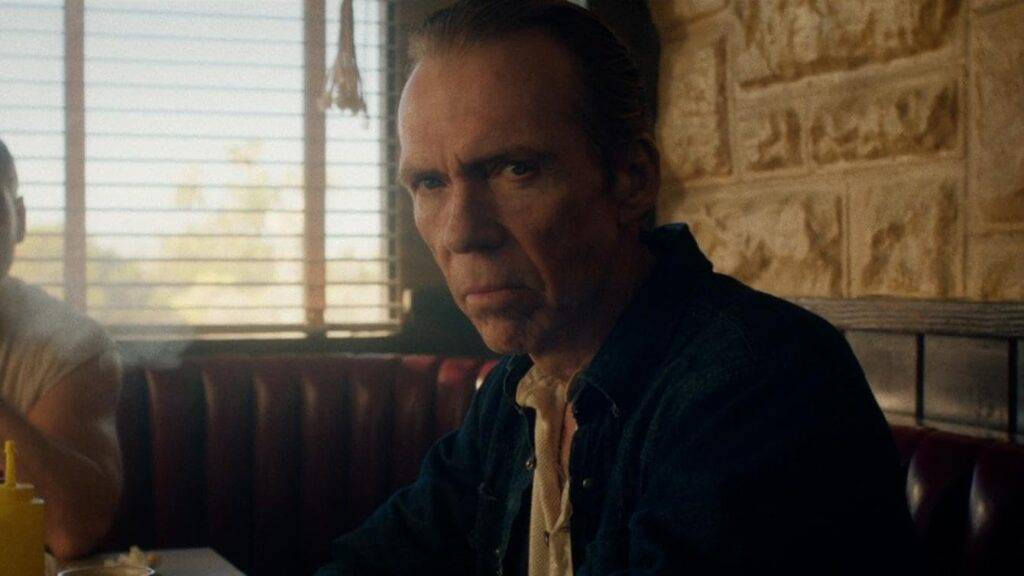
AM
I completely agree. Those restrictions have some intrinsic value. You have to do it the right way, which you did. You mentioned your DP, Mac Fiskin. You two spent hours building out this film and crafting a gorgeous look. If you had to describe the aesthetic of Yuma County, what would you say?
FG
Oh, that’s tough. I start with a shot list and overheads of every scene and then send it to Mac. We jump on a Zoom call, share each other’s screen, and talk to death. We do one scene a day and every day for weeks. Sometimes, we would do a couple of scenes if they were small, but then, sometimes, we would only get through one scene if it was a massive scene. It’s weird; by the time you get to the end, we have set certain rules before we start.
For instance, with Last Stop, we set a few rules in the beginning. There are no handheld or steady cam shots in the diner. Everything is restrained because these characters are trapped. We’re never going to let the camera do a free-for-all.
They shoot so much at Four Aces, so we found everything we could and watched all those movies and TV shows… we’d see something, and it would be like, “Okay, we’re not doing that,” or “Oh, that’s pretty cool.”
When Jim finally gets out of the diner, that’s the first time we break. We moved to a Steadicam. So we would set weird rules like that. By the time we reach the end, we have this inherent understanding of the tone. We don’t go in saying we want it to be “this.”
It’s more of a feeling that we have. We also use SHOTDECK a lot. I love it. Anytime I write a script, I compile images in SHOTDECK. We talk a lot about references and things like, what’s the fill-to-shadow ratio? What does that look like? And let’s really stick to that – stick to a way of lighting things.
Also, they shoot so much at Four Aces, so we found everything we could and watched all those movies and TV shows. Sometimes, we’d see something, and it would be like, “Okay, we’re not doing that,” or “Oh, that’s pretty cool.” It was nice to have literal references to the location we were shooting at. Then, we have to think about how we make that our own. That was a huge benefit, and then we went from there.
We shot some test footage, went back, colored it, created a LUT, and then put that and used it on set. The actors would look at the dailies and say how incredible it looked because they’re not just looking at log footage.
Let me tell you something real quick. Hold on. [Pulls out book]
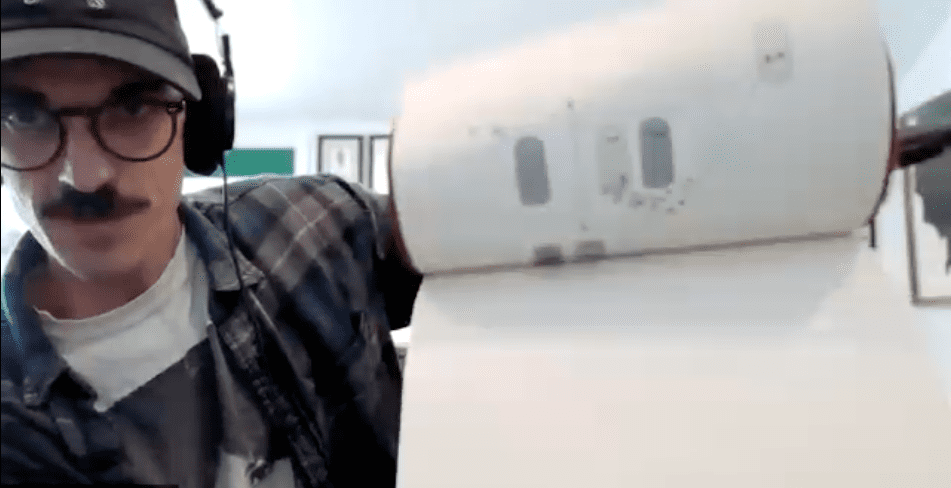
This is sort of like my Bible of Thoughts. Every shot is planned. That’s our approach to anything we’re doing. It’s just putting in the work. Putting in the work and talking through it.
AM
It’s clear to see all that work on screen. I imagine the slow-motion sequence, specifically, required a lot of planning. What was that like?
FG
All these needle drops are written into the script, and in the slow-motion sequence, we have Roy Orbison’s “Crying.” Honestly, everyone was like, “What the fuck are you doing?” You’re putting a music video in the middle of your movie. This is so wrong.
I really had to stick to my guns. I’m not going to name names, but people were not into it at all. I shot that scene a bunch in my living room with my wife, just shooting 120 frames on my iPhone and figuring it out in Premiere, cutting it. Okay, “I think I’m missing an over on Charlotte here, blah, blah, blah.”
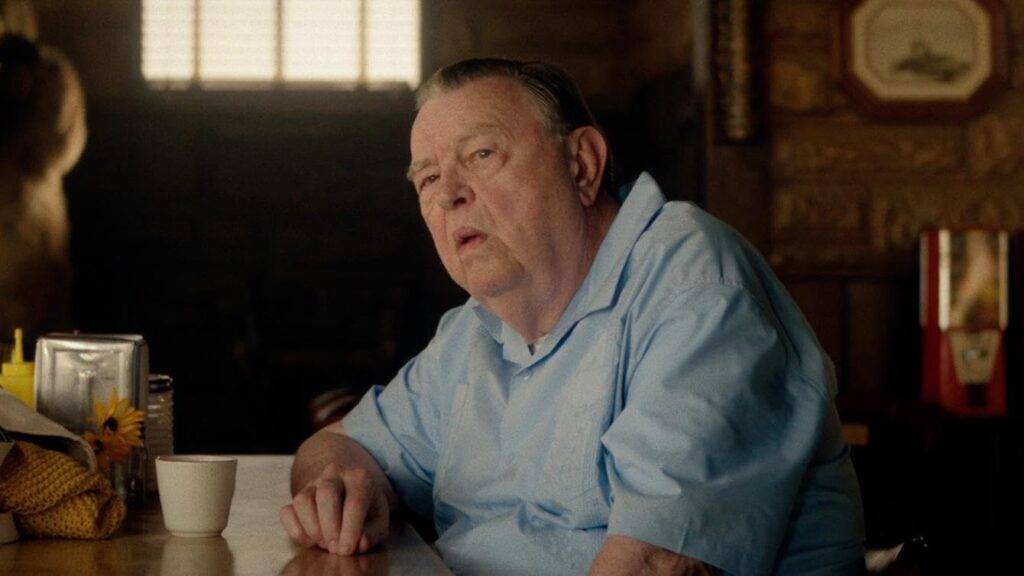
Then, when we were pre-lighting, my wife and Mac’s fiance showed up. So we shot that scene in the diner on location. I shot it on my phone and cut it that night. Obviously, it looked like shit, right? It was just the rough version of it, but I needed to show people a little bit of what I was thinking. Once I had a rough version of it, I showed them and had the Roy Orbison song on there, and people started to get it.
It was weird. It was a fucking weird thing to put in the movie. But I had to stick to my guns. I knew I really wanted it. It was also just a weird day on set.
You’re shooting everything in slow motion, and everything’s MOS (mit-out sound). All the actors are performing at double speed to get the timing looking right when you slow it down. My family showed up that day – my parents, my sister, my nephew. They were at the Video Village, and they were just like, “What is going on? What are you doing? Is this how you make movies?” Every shot you see, it’s in real-time; it’s only like a second.
We did 20-something takes of the vertigo shot. I remember my dad asking, “Why do you keep going? You got it. You already got it.” Jim and I were sitting there trying to explain what a Dolly Zoom is to my dad.
On Balancing Comedy and Drama
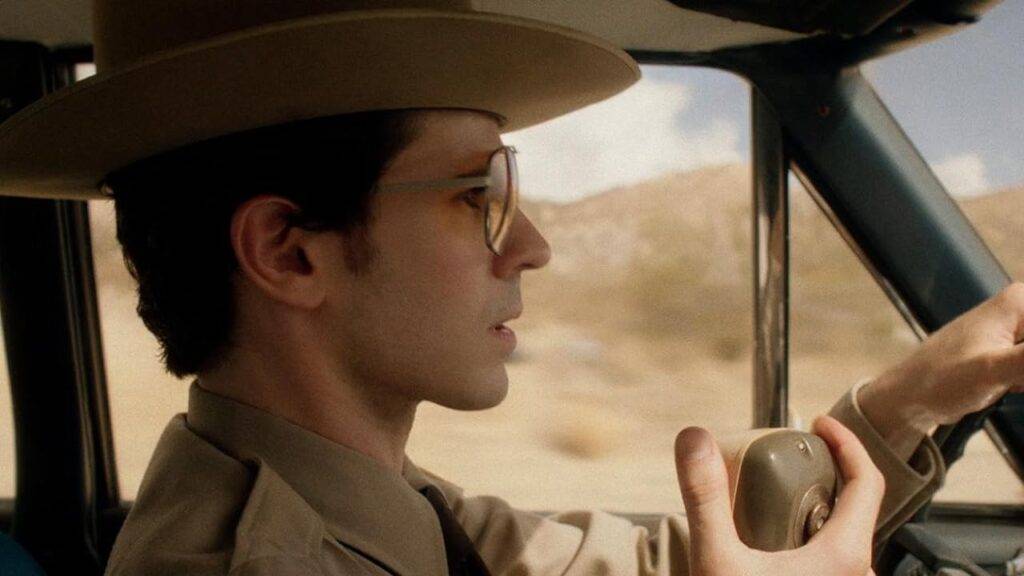
AM
You just have to commit to your vision and go with it. Something you also did was incorporate so many hilarious one-liners. I was watching it by myself, but I was still laughing-out-loud. How do you bring in these one-liners while not dramatically shifting the tone in an undesirable way?
FG
That’s a tough question. I’ve gotten that question a lot and don’t know how to answer it. There were certain lines in the script, but Nick Logan and Connor Paolo, for example, who play Travis and the deputy Gavin, were just so fucking funny that I let them just run with it. They took some big swings, and I was all for it.
I remember Gabe, my sound guy, saying, “Dude, this is just becoming a giant clown car.” He was right. It’s a great way to put it.
But, with Jim, I wanted to tone the performance down as much as possible because this is a film noir, and there is this staple in noir of the everyman getting corrupt and continuing to make terrible decisions. So I couldn’t have him be this over-the-top quirky character, right? He had to stay grounded, and we also had Charlotte, who always needed to stay grounded. It was just picking and choosing which characters would be absurd and over the top and which would bring us back to reality.
We shot chronologically, so it was fun to see more and more actors pile in the diner until it was full and then empty. I remember Gabe (Linkiewicz), my sound guy, saying, “Dude, this is just becoming a giant clown car.” He was right. It’s a great way to put it.
But I do remember being nervous on set, wondering if it was getting too big. Is it getting too absurd? We’d be shooting one direction, and we’d flip and shoot Charlotte behind the counter, and she always gave me relief at the end of the day because she reminded me that it’s not just a silly movie. She’s the real heart there, and she’s grounding this story.
I can’t say enough amazing things about this cast. I mean, they were all just so good. So fucking good.
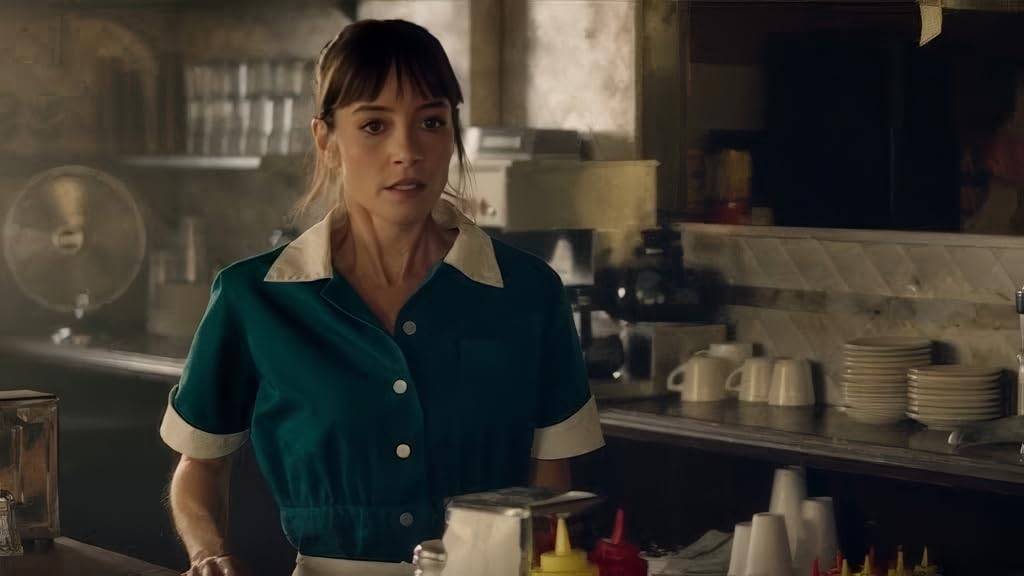
AM
Yeah, Jocelin Donahue (Charlotte) was amazing. She had a tough job because we, as the audience, had to empathize with her for that third act to be impactful, but she physically couldn’t say much due to the constraints of the situation in the diner. Maybe she’s just one hell of an actress, but what did you do on your end to ensure the audience was able to empathize without being able to rely on extensive dialogue?
FG
She is an incredible actor. That’s 100% for sure. But it was a lot of conversation. I did this with all the actors, where I would jump on Zoom. For Jocelin, she was close to me, so we were doing this in person, but we would meet up and comb through the script, and any dialogue that felt contrived, I would rewrite it on the spot.
She cares so much. We were able to go through every time somebody came into the diner. We talked about what would be going through her character’s head. What would her emotional state be? And sometimes Jocelin would pull me aside and bring something up, and she would be spot on. And it’s funny, because some actors are like, “Did you catch that? In my eyes, I was telling this or that,” and sometimes you don’t, right?
With Jocelin, though, she could always convey that through her expressions so perfectly. She really is an incredible actor.
On The Soundtrack and End Credits
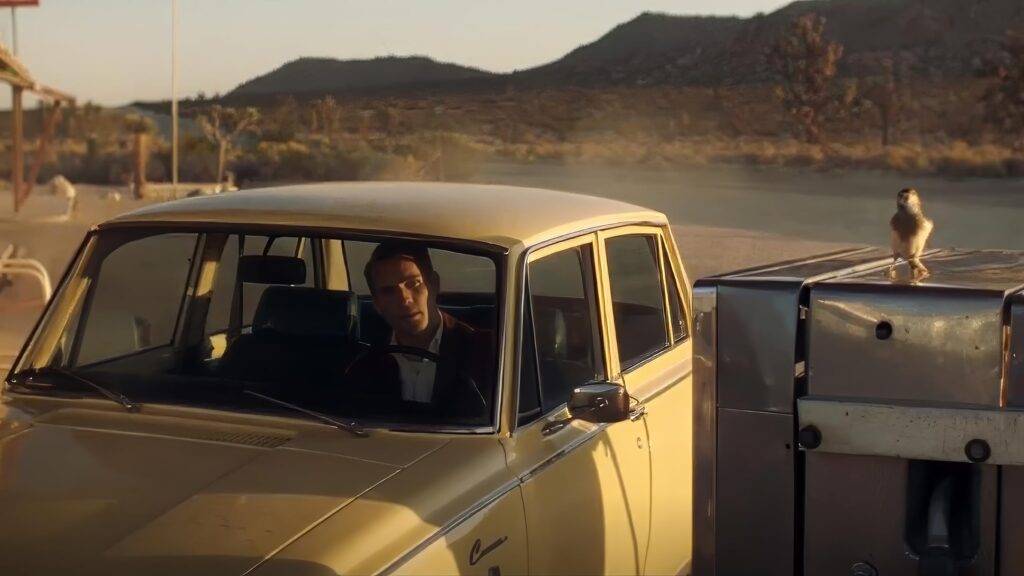
AM
Definitely. You mentioned the Roy Orbison song “Crying,” but you’ve got a few great songs and artists in there. Gladys Knight, that final track, “Let’s Live for Today” by The Grass Roots. As a musician, that must’ve been important. Were all those songs written into the original draft, or did you have to make some changes?
FG
Those were always the songs – from the first draft. That was a hill I was going to die on. I had to make sure that we got the rights to those songs. I had the actors like sing along, and of course, it came up that we should do a safety take where they’re not singing in case we can’t afford it. But I was adamant. Nope. They’re going to sing along.
I don’t want anybody telling me I can’t use this song. I love music. It’s a huge part of the process of writing for me. Specifically, “Crying” – there’s absolutely no other track that I would be able to cut that sequence to. But really, all the songs. It’s funny because a lot of people think the opening song, “Love is Blue” by Paul Mauriat, is the score. The last song during the credits is my friend’s band, Dusty Rhodes and the River Band. I used a few of their songs in my first short film, so I brought it back for this one.
2 or 3 hours later, he sent me exactly what you hear in the film. He knocked that shit out. That’s his voice. That’s Matt Compton’s voice. It was perfect.
AM
Now that you mention the credits, fortunately, I kept watching, and seemingly out of nowhere, I hear this infomercial for Japanese knives. How did that come to be?
FG
I always wanted that to be a real infomercial at the end of the movie – the post-credit sequence. I wanted to reach out to Bruce Campbell and have him do this real infomercial, but we had no more money. There was no way I could squeeze that in. But I had already written the copy, so I hit up my composer and shared my idea. I sent him a voice note in the script. He thought it was cool and, literally, 2 or 3 hours later, he sent me exactly what you hear in the film. He knocked that shit out. That’s his voice. That’s Matt Compton’s voice. It was perfect. It was exactly what I was looking for.
Speaking of Matt, I wanted to give him a shoutout because he’s incredible. Originally, I was going to score this movie. And then, my son was born, and we started I started looking for a composer. We found Matt, and he absolutely blew me away. I would never attempt to score another thing ever again. I will always go back to Matt. Like me, he’s a drummer, so we speak the same language. I’m very, very happy with what he did.
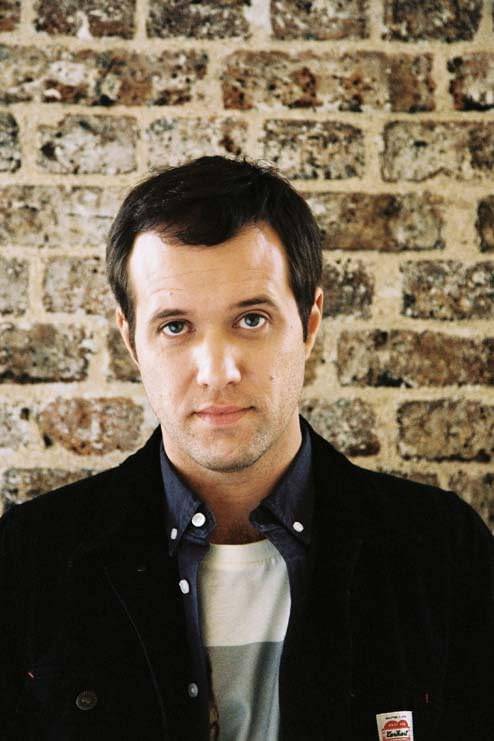
AM
And he did Palm Springs, which was also shot at the Four Aces, right?
FG
Dude, yes. You know, I have a funny story about that. I was in his studio and we were going through a scene and he paused it and said, “Dude, I’m pretty sure I’ve eaten at this diner before. Where’s this at?”
I told him, no, but you did score a movie that was shot at this diner. You know, Palm Springs? And he’s like, “Oh my God.” That’s why it works so well with Matthew Compton – he does comedies, MacGruber, Popstar, and Palm Springs, and he understood when to let the comedy breathe in this movie. He’s very talented.
On Reading Reviews and What’s Next
AM
This film has received a pretty much universally positive response from the initial critics who have seen it. It’s been a very positive response, which not all first-time feature filmmakers receive. But I’m curious—do you read those reviews?
FG
I don’t seek them out, but I get friends sending them to me, and of course, when they started spilling in after Fantastic Fest, everyone pulled their phones out.
After, we were having dinner, and everyone’s like, oh, another one came in. It’s hard to stay away from that, but I don’t really read the stuff on Letterboxd.
This is four-and-a-half years of my life. I’ve had two kids in the process of making it. It’s not like it’s a part-time job. Every single day for the past four-and-a-half years has been The Last Stop in Yuma County.
AM
I remember hearing this story with Jonah Hill talking about going to his premiere for his first feature, Mid90s. He told a story about how the film had 100% on Rotten Tomatoes, but when he was in the limo with his best friends, he was just watching his phone, watching the rating go down all night. It should’ve been the best night of his life, but he was paying attention to his phone instead. I never want that to happen.
Look, I never expected any of this to happen. All I wanted to do was make a movie I wanted to see. And I wanted to make my friends laugh. That was it. I never expected getting like representation and all the stuff that’s happening, it’s really fucking insane.
And it’s inevitable. We’re going to get bad reviews. It’s not going to stay at 100% on Rotten Tomatoes. It can only go downhill from here, and I won’t let one person’s critique spoil the celebration. It was a lot of work to make this movie. I was going through my email the other day trying to find the first draft I sent, and it was in October of 2019. This is four-and-a-half years of my life. I’ve had two kids in the process of making it. It’s not like it’s a part-time job. Every single day for the past four-and-a-half years has been The Last Stop in Yuma County.
I’m shocked and happy that it’s getting the love and attention it’s getting now. I’d rather stay away from that stuff and celebrate with my friends and those who worked to make things happen.
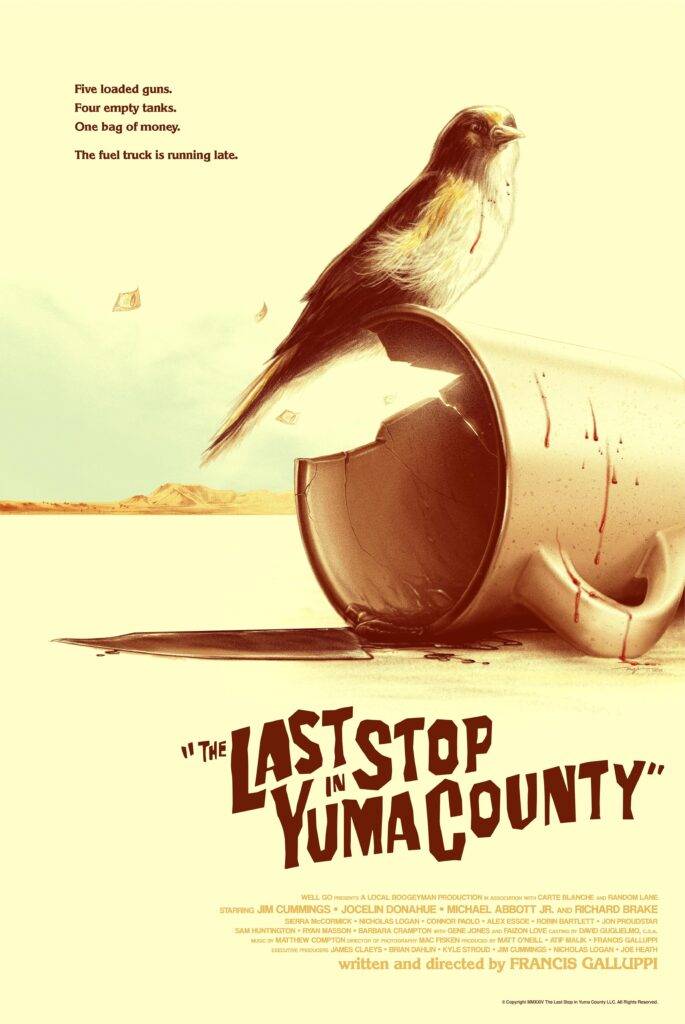
AM
Hey, you deserve it. I imagine that you’re working on something right now. I don’t know what you can and can’t share, but hopefully, you can give us a hint of what we might expect in the future.
FG
I have a Western—a period Snow Western. I’ve written it, and it’s hopefully on its way to being made. We may be shooting in Calgary, which would be fun. But that’s the thing. I wrote it around the same time I wrote Last Stop. It’s a passion project, but we’re in a climate where getting a Western made, especially a period Western, is really, really challenging to get off the ground. I’ve been fortunate enough to have a production company championing it right now, so we’ll see where it lands!
Tickets are still available to watch The Last Stop in Yuma County at CUFF 2024
You can find more interviews here
You can find film reviews here

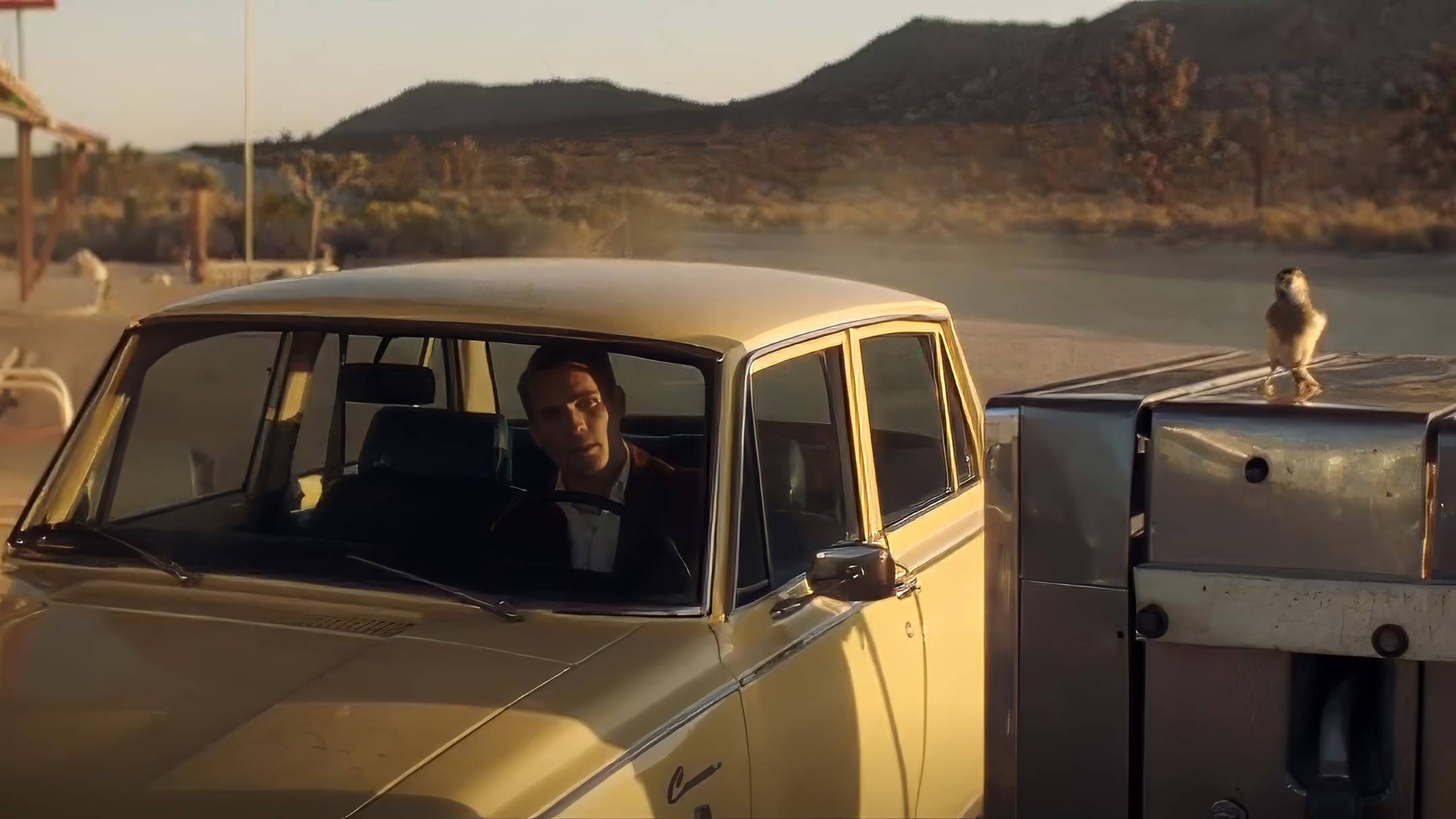



Pingback: Zach Kornfeld on His Film "Ouch!" | Fantasia Fest 2024
Pingback: Top 10 Most Underrated Films of 2024 - Points of Review